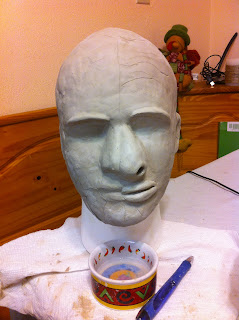 |
| Mission Trip to Nepal, Joy, October 2014 |
My daughter, Joy, is
finishing her junior year of high school. Yes—just one more year and I’ll be
done. I laugh because, as parents, we know we are never done. We just accompany
our daughter to the next fork in the road—college, or some sort of vocational training
where she can learn a skill that will help her to—well, pay bills.
While I can’t say it’s
been an easy transition from homeschooling to public high school, it was the right
decision for my family.
To give a bit of
background, my oldest daughter is twenty-four and my youngest, Joy, is sixteen.
I adopted both of them from Asia as a single mother by choice. My oldest one arrived
from Nepal when she was three and I adopted Joy from Vietnam when she was
fourteen months. I homeschooled my oldest one from third grade all the way
through two years of high school when she then enrolled at a community college
as a high school junior. She graduated from college with a bachelor’s degree in
psychology and now has a well-paying job in a related field.
I homeschooled Joy beginning
with kindergarten. At the end of that year, she scored in the top ten percent of
all kindergarteners around the country, but she was a reluctant learner—at least
when it came to me being her teacher. She loved me as a mom but not as her
favorite teacher. After one year, I didn’t have the emotional energy to continue
homeschooling her, so I put her in private school for three years.
 |
| 2005 art, Joy's favorite subject |
By the end of the third
grade, she was testing at the fiftieth percentile and I was $15,000 poorer. Joy
was a gifted learner and had been at the top of the charts after I homeschooled
her in kindergarten. I pulled her out of private school and homeschooled her
from fourth grade through ninth grade, although the eighth and ninth grades
were a homeschool-private school combination. In other words, she was
homeschooled two days a week and in private school three days a week.
When Joy entered the
tenth grade, I enrolled her in a large public high school with over 2,000
students—quite a change from homeschooling. Even at the private school, she went
to three days a week, she only had about ten kids in her classes.
I experienced much trepidation
putting Joy into public high school. I thought about all the things she would encounter.
I worried about the students she would meet, if she could make friends, if she
would be able to succeed, and if the change would be overwhelming. She had
never been in public school and I agonized over it her entire ninth-grade year
before finally making the decision to enroll her in public high school.
To be transparent, I
never felt as if I was that successful homeschooling Joy, at least not like I
was with my oldest one. While both of them scored in the top seventieth percentile
or higher every year, Joy didn’t like being homeschooled. She didn’t want to do
the work for me, and I didn’t have the time to supervise her, as I needed to,
especially when she hit middle school.
God showed me she needed
to be accountable to someone else. I was too soft. I valued our relationship
more than constantly fighting over unfinished work or the occasional issue of “cheating.”
When we went to the
homeschool-private school environment, even though teachers expected more, they
were also too lax. It was a Christian school, and while I appreciated the
Christian influence and grace, I knew it wasn’t what Joy needed. She needed to
learn the importance of accountability—the real world is tough. In public high school,
teachers expect your assignments to be turned in on time. If you don’t do
them, they don't listen to your excuses. In college, you need to
study hard even if you don’t attend a class every day. As an adult, your boss expects you to do your job. One season of life builds upon another.
If you get the picture I
am painting, you can imagine what that first semester was like when Joy entered
tenth grade. On the positive side, she immediately made good choices in
friends. I am thankful for God’s protection in that area. She stuck to the
straight and narrow path and navigated through the social waters unscathed. I
pray that will continue through her senior year.
As an aside, Joy was a competitive
gymnast for over ten years and switched to competitive cheer when she entered
eleventh grade—so she was busy. In her first year in public high school, she did
not participate in a sport. I wanted her to focus on getting good grades
Joy’s grades that first
semester were—well, not good. I will spare you the details, but the only “A’s”
she received were in P.E. and art.
As painful as this was to
me, my philosophy was this: Sometimes kids need to fail before they realize
they want to succeed. Most kids, if given the choice, would rather succeed than
fail. As parents, we need to make sure they have the choice. We don’t want to
set them up for failure, but neither should we ensure success if they haven’t
earned it.
Kids and teens need to
learn the value of hard work Once Joy failed a class, she realized that failure
was an option, and it wasn’t an option she wanted. She didn’t like it. That
first year in public high school was hard—but she never complained and I never
made excuses for her.
Eleventh grade has been much
better. She is making A’s and B’s in all her classes, even taking AP classes,
and doing well. She has learned how to study. Sometimes we have to make the
tough choices we don’t want to make to teach our children life lessons they
won't learn any other way. In Joy’s case, public school was the best choice.
 |
| Joy in her cheerleading outfit with a good friend |
Our public high school
isn’t perfect, but I know Joy is receiving an excellent education. I did insist
she be enrolled in honors, pre-AP or AP classes. I wouldn’t allow her to be
placed in classes with students who didn’t want to learn. As a parent, you have
more input than you might realize on what classes your child takes. You know what
is best for your child, particularly if you have been a homeschooling parent.
I also insisted that Joy
take electives she would enjoy. She took art in tenth grade, photography this
year, and will take pottery her senior year. High school is one of the last opportunities
to indulge in cultured learning. The arts in my opinion are underrated. If you
look at the richest civilizations in history, their culture has touched our
society—what nation would we be if it were not for the amazing influence of Egypt,
Greece, and Rome on our language, music, and arts? In college, classes tend to focus
on career goals, unless you major in art, and most parents prefer educational
pursuits that will ensure a well-paying job when their child graduates.
If you are debating
whether to put your child in public school after homeschooling, particularly
high school, ask yourself these questions: Do I trust that my child can make
wise choices? Can my child handle peer pressure and bullying? Can my child deal
with alternative lifestyles and kids who embrace different values? Will my
child hold on to the morals I have spent years instilling in her, and can she shoulder
the responsibility that comes with being in public school? Is my child able to make
friends? Is she insecure or confident in her abilities?
If you feel like your
teen can navigate the social waters of public high school, then I would ask,
can my child receive a better education in public high school than if I
homeschool her?
This is a tough question,
but it’s an important one. High school is the stepping stone to college. If your
child does not master the core subjects in high school, college will be
difficult. Knowing Joy’s poor study habits, I knew she would not succeed in
college unless someone toughened her up, and I knew it wouldn’t be me.
If your child is doing
well homeschooled, working hard, and making good grades, I wouldn’t pull her out
to enroll her in public high school. If something is working, don’t fix it.
Many teens, including my first one, are able to go from homeschooling directly
into college. It can be done and many homeschooling students do it successfully
every year.
 |
| 11th grade Joy's art, anatomy |
Assess your child’s
strengths and weaknesses. Ask your teen what he or she wants to do. A happy
teen is easier to live with than a discontented teen. If you discover after a
couple of months, public high school isn’t working or vice versa, it doesn’t
mean you failed. You simply make the adjustment. Life goes on. In the end, it
will be only a small blip in the educational journey of your child.
I used to say, “The worst
day homeschooling is better than the best day in public school.” Mostly I remember
the good days and there were many of them. One year may be great and the next,
not so much. Life happens. Children change as they mature, and despite other
things that may become a distraction, parents need to continue to provide an
environment conducive to learning at home. It’s good to reassess each year
where you stand on these important issues.
As a Christian, I found
myself in bed many nights, exhausted, asking God for wisdom and guidance.
Homeschooling was one of the hardest things I ever did but also one of the most
rewarding, but there came a time when God clearly said to me, “It’s time to let
go. Joy needs to go to public school so she can learn things you can’t teach
her. You can trust me.”
If you would like more
information, I would encourage you to check out Kids in the House. I homeschooled before the invention of the internet and
sites like this one would have been very helpful when I was seeking answers to
these difficult questions. Read and learn as much as you can, whether you are
new to homeschooling or a seasoned homeschooling family. When it comes to high
school, check out all of your options and ask God for wisdom. He will guide you
to make the right decision for you and your family.


.JPG)
.JPG)
.JPG)
.JPG)
.JPG)
.JPG)
.JPG)

.JPG)






.jpg)


